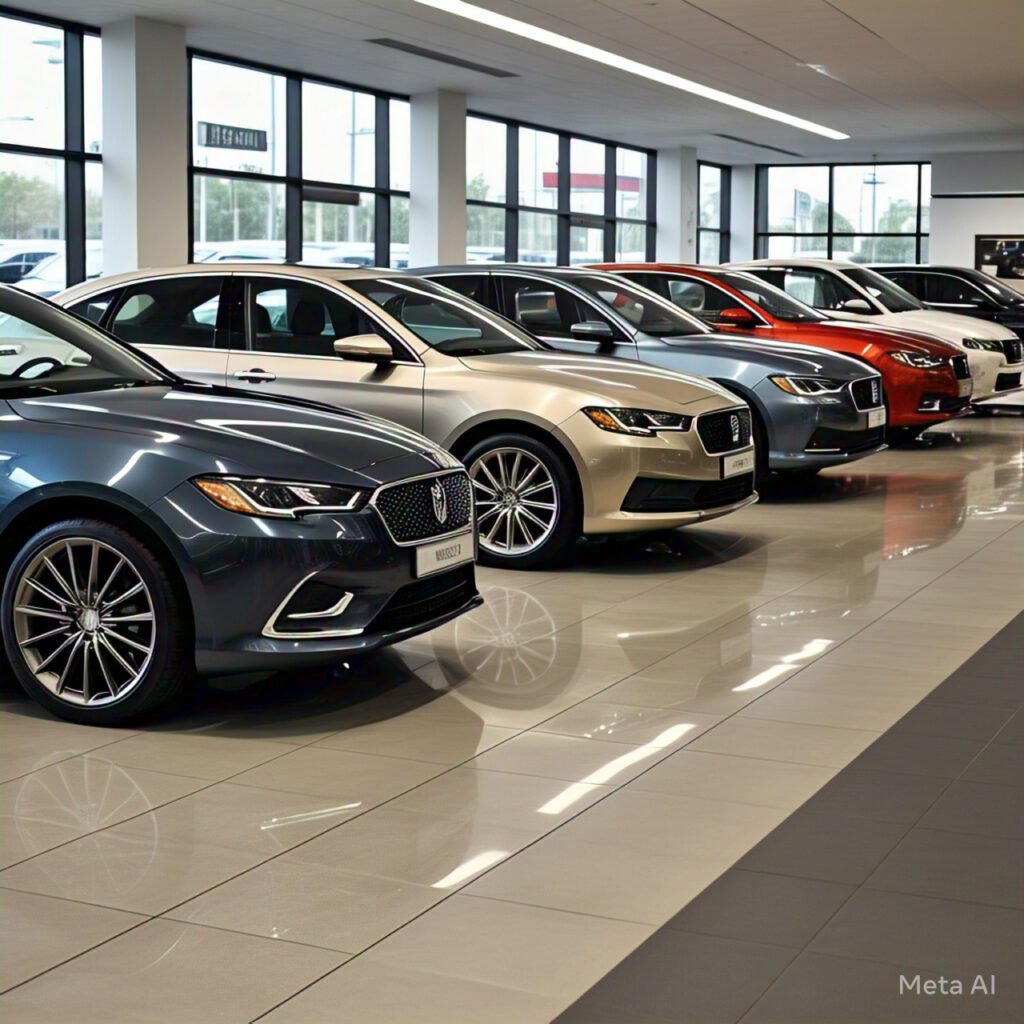Car Types and Categories
There are many different designs, sizes, and configurations of automobiles, each made to serve particular functions and satisfy various customer requirements. Most of the time, these categories are based on things like size, purpose, drivetrain, and style. An overview of the most typical car types and categories can be found below
1. Sedans
Overview: The most prevalent type of passenger vehicle is the sedan. They generally have four doors and a separate trunk, offering a balance between comfort, space, and fuel efficiency.
Features: Typically offer seating for 4-5 passengers, a trunk for luggage, and a mid-size body structure.
Toyota Camry, Honda Accord, and BMW 3 Series are examples. Categories: Sedans can be divided into subcategories like:
Compact Sedans: Smaller sedans designed for efficiency and city driving (e.g., Honda Civic).
Full-size Sedans: These are larger sedans that have more space for passengers and cargo (like the Chevrolet Impala). Luxury Sedans: Premium sedans with high-end materials, features, and performance (e.g., Mercedes-Benz S-Class).
2. Hatchbacks
Overview: Hatchbacks are similar to sedans but have a rear door that swings upward to provide access to the trunk or cargo area. They usually have a more compact body, making them easier to maneuver.
Features: Offers versatility with a larger cargo space when the rear seats are folded down.
Examples: Volkswagen Golf, Ford Focus, Mazda 3.
Categories:
Subcompact Hatchbacks: Smaller, economical vehicles ideal for city driving (e.g., Toyota Yaris).
Compact Hatchbacks: Slightly larger, providing more interior space and performance (e.g., Honda Civic Hatchback).
3. Coupes
Overview: Coupes are two-door cars with a sporty, sleek design. They typically have a smaller rear seat and a trunk rather than a hatch.
Characteristics: Known for their sporty performance and fashionable appearance. They often prioritize design over practicality, with limited back-seat space.
Examples: Chevrolet Camaro, Ford Mustang, BMW 4 Series.
Categories:
Sports Coupes: High-performance vehicles with a focus on speed and agility (e.g., Porsche 911).
Luxury Coupes: Expensive two-door cars that blend performance with high-end features (e.g., Mercedes-Benz E-Class Coupe).
4. Convertibles
Overview: Convertibles are vehicles with a retractable roof that allows them to be driven either as a closed car or as an open-air vehicle.
Features: Provides the experience of open-air driving and can be either a two-door or four-door car. They are typically considered recreational rather than practical.
Examples: Mazda MX-5 Miata, Ford Mustang Convertible, BMW Z4.
Categories:
Roadsters: Smaller, two-seater convertibles often built for performance (e.g., Chevrolet Corvette Convertible).
Luxury Convertibles: These are higher-end models with luxury and advanced features (like the Mercedes-Benz S-Class Cabriolet, for example). —
5. SUVs (Sport Utility Vehicles)
Overview: SUVs are larger vehicles designed to offer more passenger and cargo space. They often come with higher ground clearance, making them suitable for both city driving and off-road capabilities.
Features: Can be two-wheel drive  four-wheel drive or all-wheel drive (AWD). They provide high ground clearance and ample cargo space.
four-wheel drive or all-wheel drive (AWD). They provide high ground clearance and ample cargo space.
Examples: Toyota RAV4, Ford Explorer, Jeep Grand Cherokee.
Categories:
Compact SUVs: Smaller and more fuel-efficient, ideal for families and urban environments (e.g., Honda CR-V).
Mid-size SUVs: Larger with more power, better suited for off-road, and often used for family travel (e.g., Toyota Highlander).
Full-size SUVs: Large and often capable of towing heavy loads and handling rough terrain (e.g., Chevrolet Tahoe).
Luxury SUVs: High-end SUVs with advanced features, better materials, and enhanced performance (e.g., Range Rover).



